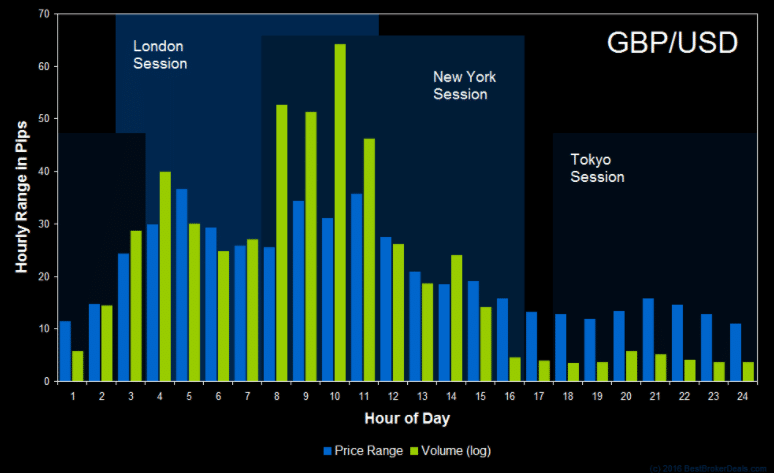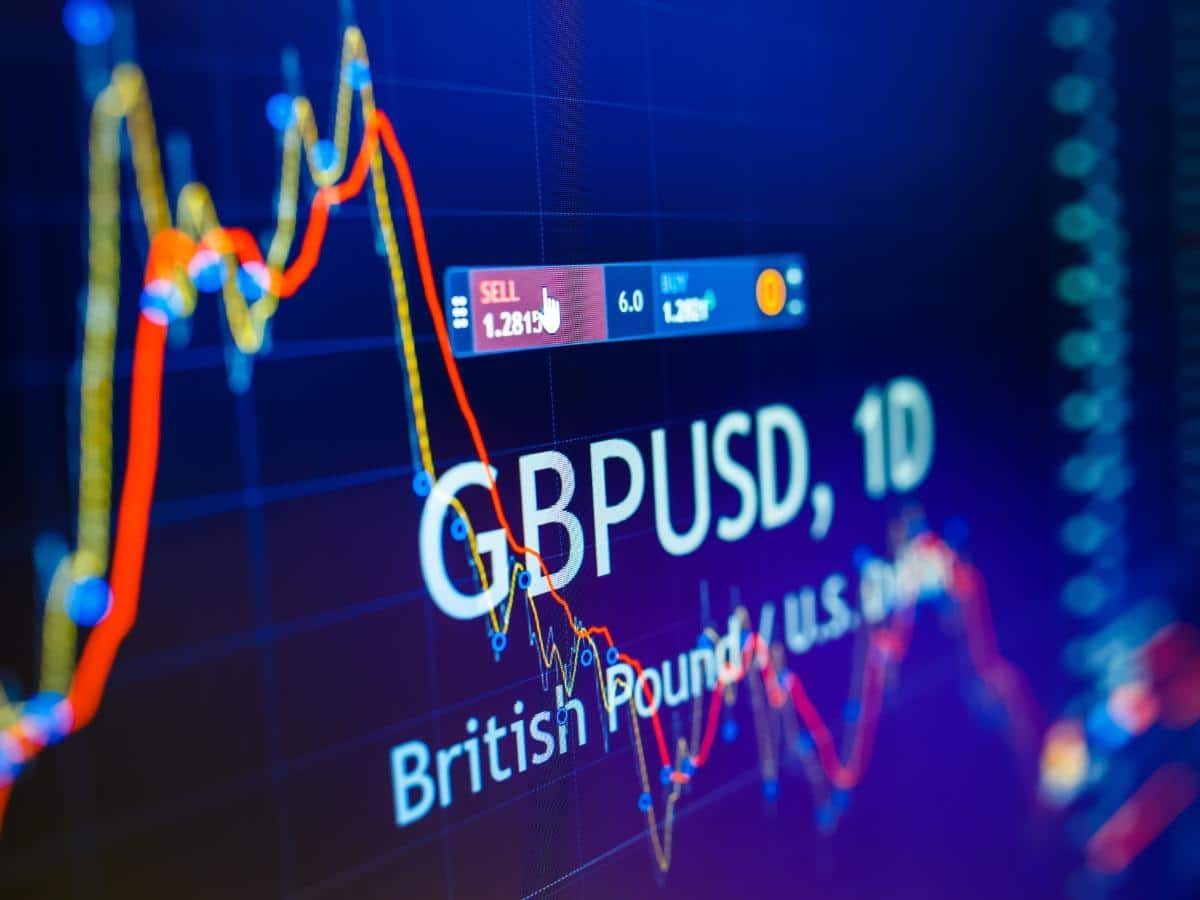Timing is an important aspect for anyone looking to make a fortune speculating on currency prices. Just because the marketplace is opened all day long does not mean one should go out placing trades. There are specific hours during the day that present ideal trading conditions for instruments.
If one is to profit from trading the GBP/USD, it is important first to have an idea of the different sessions dominating the financial markets. They are broadly classified into three. Time differentials between various geographies are the trigger behind the three sessions.
Likewise, the Asian session, which starts at midnight to 6 am GMT is where everything starts. As long as Tokyo markets are up and running, ideal conditions come into play, perfect for speculating on some majors.
Once markets in Japan shut down, the London session comes into play, starting 7:30 am to 3:30 pm. Similarly, this session comes with some unique conditions ideal for specific instruments. The New York session closes activity in the $6 trillion marketplaces on any given day. The session starts at noon and runs until 8 pm GMT.
The best time
Understanding the various periods makes it pretty easy to understand the ideal spell to trade the cable. The best time would often be when there are many participants and data releases and events likely to influence trader’s sentiments on the pound and the greenback, which make up the pair.
Similarly, when the London and the New York sessions are running concurrently, the pair tends to arouse the most interest. Likewise, the pair experiences strong price swings starting 6 am to 4 pm, during which liquidity and volume go over the roof.
While it is still possible to trade the cable outside the 6 am to 4 pm GMT period, the pip movement is usually not the biggest. Likewise, exchange rates tend to move much slower, making it difficult to generate substantial pips for profits.

When markets are open in England and the US, the cable can experience price swings of up to 100 pips, making it easy to generate significant profits. However, during this period, the risk of losing money is usually high on being on the wrong side of a trade.
In addition to time, it is important to pay close watch to some days of the week, known for ideal conditions. The busiest spell, which usually comes in the middle week, offers some of the best conditions for speculating on exchange rates.
Therefore one should always look to place trades between Tuesday and Thursday, given the high volatility and volume on offer.
Price catalysts
The 6 am to 4 pm GMT period stands out partly because of the data releases that come into play. Exchange rates fluctuate as traders and investors react to different economic data that paint a picture of how two economies are doing.
Likewise, financial data likely to influence GBP/USD sentiments in the market is made available between 6 am to 4 pm GMT. During this spell on specific dates, you are likely to hear about GDP, consumer price index, retail sales, manufacturing, and non-farm payroll data.

The major economic data that influence cable sentiment and prices often hit the wires between 2 am, and 4:30 am ET on specific days of the week. It is common to find the pair experiencing wild swings and high volumes 30 to 60 minutes before releases and one to three hours after key economic data is made available.
US data releases that influence traders’ sentiments on the greenback often come into play between 8:30 am and 10 am ET. One hour before release and one hour after release would often provide some of the best conditions to open positions on the pair.
Therefore, it is important to pay close attention to calendars to see when key data are likely to come into play and try to understand their potential impact depending on the outcome.
In addition to economic data, GBP/USD is susceptible to political development in the US and the UK. Traders react to developments across the two countries, conversely adjusting their positions in the pair. Therefore, it is vital to be on the lookout for key political developments, most of which come into play whenever the UK and the US markets are up and running.
Similarly, natural disasters afflicting the two countries cause jitters forcing people to adjust their positions in the pair.
Why timing is important
Just because the cable is fluctuating up and down does not give one a reason to open a new position. Successful traders remain successful and, in the process, generate a fortune on mastering when to go in, when to exit and when to stay off.
Similarly, it is crucial to open positions when there is sufficient volatility and volume around any instrument. Volatility measures the rate at which prices fluctuate. Exchange rates tend to move much faster during periods of high volatility, making it easy to profit from price swings. Similarly, volume is the catalyst that helps sustain price in a given direction. Whenever there are many people placing orders, then ideal trading conditions come into play.

Trading GBP/USD when volatility and volume are high allows one to avoid widened spreads’ pitfalls. Spreads, which are essentially the cost that brokers charge, widen during the odd hours when GBP/USD is not active due to a much lower number of people placing trades on the pair.
Narrow spreads on the cable come into play whenever the New York and London sessions are running concurrently. The narrow spreads offered by brokers at specific times of the day and day of the week increase the prospect of generating optimum profit on the opened position.
Bottom line
GBP/USD is an ideal instrument to speculate on, given the price swings always in play. However, it does not generate ideal speculating conditions every single day or hour. There are specific days of the weeks and hours of the day that it is best speculated on. The instrument attracts the most interest during the London and New York session, given the heightened liquidity in play at the time.
